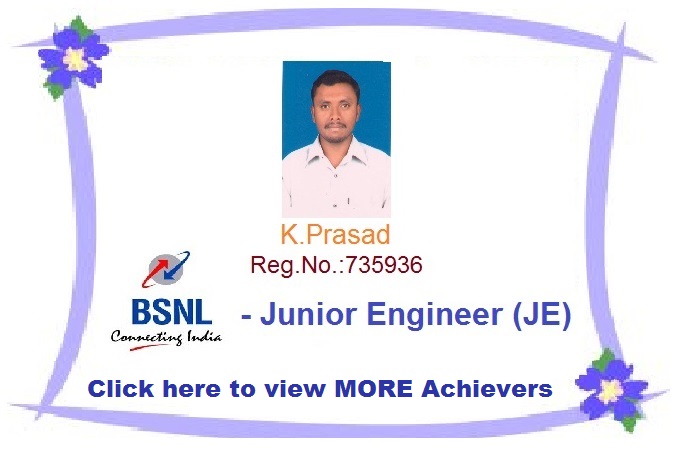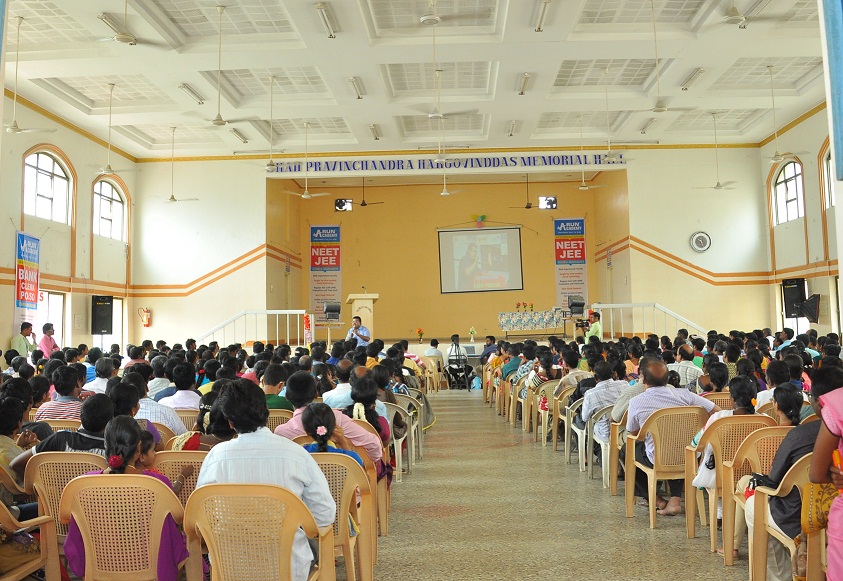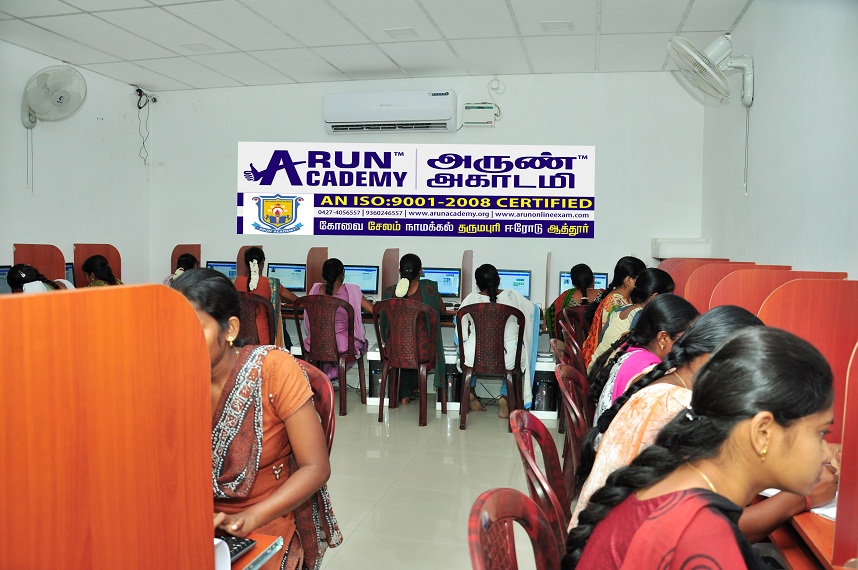SCIENCE AND TECHNOLOGY
January
- According to Food Standards Agency (FSA) of United Kingdom chips, potatoes and bread cooked to brown can cause cancer. When the starchy foods are roasted, grilled or fried for too long at high temperatures (above 120 degree Celsius), it produces carcinogenic chemical Acrylamide. Acrylamide is toxic to DNA and causes cancer.
- According to recent study, mcr1 gene that makes bacteria resistant to colistin, an antibiotic of last resort was found in China. It was discovered in a wide variety of strains of Escherichia coli (E Coli). Colistin was recently banned for use in agriculture will soon be introduced in clinical use for first time.
- Astronomer Stephen Kane from San Francisco State University (USA) claimed that an exoplanet called Wolf 1061c could be habitable, stating that its faster orbit changes may cause its climate to be quite chaotic.
- Astronomers discovered two powerful phenomena in universe a super massive black hole and collision of giant galaxy clusters about 2 billion light years from Earth. It was discovered combining data from India’s Giant Metrewave Radio Telescope (GMRT), NASA’s Chandra X-ray Observatory and other telescopes.
- Atomic clocks on first satellite IRNSS1A of the NavIC (Navigation with Indian Constellation (India's indigenously built satellite based positioning system)) has developed a technical issue with all 3 of its atomic clocks failing. ISRO will soon launch one of its back up navigation satellites as a replacement to IRNSS1A satellite. Remaining satellites of NavIC constellation (having total 7 satellites) are performing accurately.
- Austrian Physicists created new form of Hydrogen negatively charged hydrogen clusters, previously unseen form of hydrogen.
- Engineers from Stanford University have built a low cost human powered blood centrifuge that can separate blood into its individual components in only 1.5 minutes. It can spin at speeds of 1,25,000 revolutions per minute and exert centrifugal forces of 30,000 Gs. It is claimed to be fastest spinning object driven by human power.
- Indian Space Research Organisation (ISRO) successfully maneuvered orbit planes of Mars orbiter Mission (MOM) or Mangalyaan to enhance the capacity of battery and enhance battery life.
- Indian Space Research Organisation (ISRO) successfully tested indigenously developed cryogenic engine (C25) for upper stage ‘GSLV Mk III’ rocket. It was first test in series of two tests. First was for 50 seconds and second planned test will be for 640 seconds. Cryogenic engines are used in the upper stage of a rocket launch as they provide the maximum thrust to a launcher vehicle. It uses Liquid Oxygen and Liquid Hydrogen propellant combination and can carry heavy payloads to orbits.
- Indian Space Research Organisation (ISRO) will launch record 103 satellites in a single flight in February 2017, most attempted ever by any country. These satellites will be launched using PSLVC37 from Satish Dhawan Space Centre in Sriharikota in Andhra Pradesh. Of 103 satellites, 100 are micro satellites from foreign nations. Earlier, ISRO had planned a launch of 83 satellites in January 2017, But launch was delayed and 20 more foreign satellites were added.
- Indian Space Startup TeamIndus proposed an opportunity to its donors to leave their name on moon, on paying Rs 500. Names of donors will be micro engraved on a small sized aluminium object and placed on the lunar surface which will land on moon on 26 January 2018.
- India’s first dedicated space observatory, ASTROSAT has captured rare phenomenon of a small six billion year old vampire star preying on a bigger star. Vampire star phenomenon is observed when smaller star sucks mass and energy out of the bigger companion star, causing its eventual death.
- Ministry of Earth Sciences (MoES) commissioned a very high resolution (12 km) global deterministic weather prediction model for generating operational weather forecasts, replacing earlier version of horizontal resolution of 25 km. MoES’s operational Ensemble Prediction System (EPS) is upgraded to 12 km by High Performance Computing (HPC) augmented to 10 Peta Flops (PFs) from current 1.2 PFs.
- National Aeronautics and Space Administration (NASA) approved mission to explore 16 Psyche, an iron rich asteroid. Mission craft will be launched in 2023, and will arrive at Psyche in 2030.
- Outdoor trials of genetically modified mosquitoes launched in Jalna district of Maharashtra by British Biotech Firm Oxitec, to demonstrate efficiency of this technique to suppress wild female mosquito populations that transmit dengue, chikungunya and Zika. It uses Release of Insects carrying Dominant Lethal genes (RIDL) technology.
- Researchers Scripps Research Institute (USA) created world’s first stable semi-synthetic organism, a single celled bacterium with an expanded genetic code. Semi-synthetic organism is modified Ecoli bacteria created by introducing DNA molecules that are not found in nature in a common bacterium. Life’s natural genetic code only contains four natural bases adenine (A), cytosine (C), guanine (G), thymine (T). These bases pair forms two base pairs in the DNA ladder. The newly created bacterium has two human created X and Y bases that grow and divide, much like natural bases.
- Researchers from Midwestern University (USA) identified function of the human appendix, often considered of little use. Human appendix has evolved over 30 times throughout mammalian evolution. It was found that species with appendix have higher concentrations of immune (lymphoid) tissue in cecum (part of large intestines), suggesting that appendix could serve as a secondary immune organ. Appendix might also function as a safe house for helpful gut bacteria as lymphatic tissue can stimulate growth of beneficial gut bacteria.
- Researchers from USA's Massachusetts Institute of Technology (MIT) developed 3D version of graphene, one of strongest materials. So far Graphene was not able for practical use because of its extreme thinness. 3D version of Graphene is only 5% as dense as steel but is 10 times stronger.
- Researchers from University of Central Florida (USA) have developed a new method for Faster Diagnosis of HIV, Lyme disease, syphilis and rotavirus infections, by combining nanoscience with a magnetic phenomenon.
- Scientists at University of Manchester (UK) have developed world’s lightest (40 Grams) high performance mechanical watch RM 5003, using graphene. Ultralight watch was made using unique graphene compositeknown as Graph TPT.
- Scientists discovered a new species of gibbon named as ‘Skywalker hoolock gibbon’ living in southwest China’s rainforests.
- Scientists from Botanical Survey of India (BSI) discovered a new species of Zingiber (ginger) from Andaman and Nicobar Islands. The new species has been named as Zingiber pseudosquarrosum and belongs to genus Zingiber.
- Scientists from Tohoku University (Japan) claimed that Silicon (Si) is missing element in Earth’s core, paving way for better understanding of how our world formed. Silicon likely makes up a significant proportion (5%) of Earth’s core after its major constituents iron and nickel.
- Scientists from University of Limerick (Ireland) claimed to discover a new human digestive system organ (79th Human Organ) Mesentery. Mesentery connects intestine to the abdomen and was previously thought to consist of fragmented and disparate structures.
- Scientists spotted a new dark, contorted sunspot that is twice diameter of Earth, using Atacama Large Millimetre/submillimetre Array (ALMA) antennas located in Atacama Desert of northern Chile.
February
- 2 day South Asian Speakers Summit held at Indore (Madhya Pradesh).
- According to Indian Council of Agricultural Research (ICAR), pests eat away about 30 35% of annual crop yield in India. Among such pests, nematodes (microscopic worms many of which are parasites) are major threat to crops as they caused loss of 60 million tonnes of crops annually.
- Chinese scientists from Northwest A&F University produced world’s first cows with increased resistance to bovine tuberculosis (TB).
- Electric car maker Tesla unveiled world’s largest battery storage plant in California, consisting 396 Tesla power packs that can store 80 mega watt hours of electricity. It is enough to power 2500 households for a day.
- First Strategic Dialogue between India and China held in Beijing (capital of China). It was attended by Foreign Secretary S Jaishankar on India’s Behalf.
- Indian Space Research Organisation (ISRO) developed Telemetry & Telecommand Processor (TTCP) and its productionisation will be initiated shortly. With this, ISRO aims to replace expensive imported equipment necessary for uplinking and downlinking to satellites.
- Indian Space Research Organisation (ISRO) successfully ground tested India’s largest indigenously developed Cryogenic Upper Stage engine for GSLV Mark III. C25 stage is most powerful upper stage so far developed by ISRO. It uses Liquid Oxygen and Liquid Hydrogen propellant combination stored at minus 253 degrees centigrade. Development of C25 cryogenic stage will provide ISRO capability to launch 4 ton class satellites in Geosynchronous Transfer Orbit (GTO), an altitude where satellites revolve in sync with Earth’s rotation.
- Indian Space Research Organisation (ISRO) successfully launched record 104 satellites in single mission, on board of Polar Satellite Launch Vehicle PSLVC37. Of total 104 satellites, 3 were Indian and remaining 101 were International. Indian satellites included earth mapping Cartosat2 satellite (main payload) and nano satellites INS1A and INS1B. Cartosat2 Satellite: It was the primary payload of the mission. It is similar to the earlier four satellites in Cartosat2 Series. It weighs 714 kg and has a mission life of five years. It is earth observation satellite that will provide remote sensing services. INS1A and INS1B Satellites are nano satellites, carrying Surface Bidirectional Reflectance Distribution Function Radiometer and INS1B was carrying Earth Exosphere Lyman Alpha Analyser as payloads. Foreign Satellites 96 from USA and remaining 5 from Israel, Kazakhstan, Netherlands, Switzerland and United Arab Emirates. Around 90 small satellites belonged to USbased company Planet Inc. They are named ‘Doves’ and their constellation will be used to image the earth at low cost.
- Indian Space Research Organisation (ISRO) will launch its First mission to Venus and its 2nd to Mars. It is confirmed by newly allotted budget to department of space with 23% increase and mentioning provisions under its space sciences section for ‘Mars Orbiter Mission II and mission to Venus’.
- Intech DMLS has launched India’s first indigenously developed Jet Engine series under brand name Poeir Jets. India became first in Asia and 4th country in world after to indigenously develop such an engine in private space.
- International team of researchers from China, Russia, and USA conducted computer modeling to create a thermodynamically stable compound of sodium and noble gas helium Na2He, which is stable at high pressures. Noble gasses were thought not to mix with other elements and forming no compounds. However, this study will bring big change in noble gas theory.
- Japanese FORPHEUS (Future Omron Robotics Technology for Exploring Possibility of Harmonised automation with Sinic Theoretics), world’s first robot table tennis tutor has created Guinness World Record for being able to play table tennis better than most humans.
- Japanese Scientists developed terahertz (THz) transmitter technology as next generation system which can transmit digital data over 10 times faster than 5G mobile networks (over 100 GBPS). Range of frequencies will fall within 275 GHz to 450 GHz, paving way for faster internet.
- NASA Scientists discovered living microorganisms (mostly bacteria) trapped inside crystals for 60,000 years in a Naica mine in Mexico. It has caused concern for astrobiologists about bringing back samples collected on space missions in solar system as dangerous extraterrestrial organisms could accidentally enter into Earth on a returning spaceship.
- NASA discovered 7 new Earthsized exoplanets that may sustain life, detected using NASA’s Spitzer Space Telescope and several observatories including Trappist robotic telescope at Chile. These exoplanets are orbiting dwarf star named Trappist1, which at 39 light years away. They could have some liquid water and maybe supporting life. Of seven planets, three orbit in habitable (Goldilocks zone) where temperatures are suited to surface oceans of liquid water. 6 inner planets lie in a temperate zone where surface temperatures range from zero to 100C and masses around 0.4 to 1.4 times mass of Earth.
- NASA stated that Earth sized planet Proxima b may not host life despite it being in the habitable zone of its host star, due to frequent stellar eruptions.
- NASA's Chandra XRay Observatory detected a strange Xray signal from Milky Way galaxy, paving way to help scientists in proving existence of dark matter in universe.
- NASA’s solar powered Juno spacecraft completed closest flyby of Jupiter's mysterious cloud tops for fourth time, roughly 4,300 km above Jupiter’s cloud tops at speed of 208,000 kmph.
- National Aeronautics and Space Administration (NASA) will send its first robotic spacecraft to Sun in 2018 Solar Probe Plus mission will get within six million kilometres of the Sun to probe its atmosphere. Sun is about 149 million kilometres from Earth. Mission's aim is to answer 3 important questions Why Sun’s surface is not as hot as its atmosphere. Sun's surface temparatue is only 5500 Degree Celsius while temparature of Atmosphere is 2 Million Degree Celsius. What accelerates speed of the solar wind. Why does Sun occasionally emit high energy particles that pose a danger to unprotected astronauts and spacecraft.
- Researchers From China discovered 540 Million Year Old years old Fossils of microscopic sea animal Saccorhytus, earliest known ancestor of humans along with a vast range of other species.
- Researchers discovered new species of bird Rufoustailed Rock Thrush (Monticola saxitilis) Nepal's upper Dolpa region.
- Researchers from MIT (USA) developed a small battery that runs on stomach acids and is capable of powering e-pills to monitor patient health. It can generate power to run small sensors or drug delivery devices that can reside in gastrointestinal tract for extended periods.
- Researchers from Sweden developed world’s first heat driven transistor, with high sensitivity to heat. It means that Single degree temperature rise is sufficient to cause a detectable current variation.
- Researchers from USA based Michigan State University developed first stretchable integrated circuit (IC) made entirely using an inkjet printer. Using ink, researchers created elastic material, circuit and organic light emitting diode (OLED). As material is produced using a standard printer, it has cost advantage over current technologies that are expensive to manufacture. Stretchable electronic fabric can be easily folded and put in one’s pocket without breaking.
- Scientists developed an effective and economical treatment for Ebola Virus using antibodies from Horses. This is a cost effective treatment that can be used in low income countries like Africa.
- Scientists developed novel rubber like material nicknamed thubber with high thermal conductivity and elasticity. It is an electrically insulating composite material with combination of metallike thermal conductivity, elasticity similar to soft, biological tissue.
- Scientists found that consumption of litchi fruit on an empty stomach can result in very low blood glucose level and acute encephalopathy leading to seizures and coma, and causes death in Children. Litchi contains toxins hypoglycin A and methylenecyclopropylglycine (MCPG). Its consumption and skipping evening meals causes very low blood glucose level (less than normal 70 mg/dL) and acute encephalopathy in children. Outbreaks of high fever followed by seizures and death in young children reported in Muzaffarpur in Bihar and other litchi growing regions in India due to consumption of unripe lychees on an empty stomach.
- Scientists from Australia’s Commonwealth Scientific and Industrial Research Organisation (CSIRO) made world’s strongest material graphene commercially more viable by using soybean. They developed GraphAir technology that transforms soybean oil into graphene films in a single step. GraphAir technology grows graphene film in ambient air with a natural precursor, making its production faster and simpler.
- Scientists from California National Primate Research Centre (USA) tested new male contraceptive Vasalgel, that blocked sperm flow on monkeys; leading to efective birth control. Now it is waiting for human trials.
- Scientists from Jawaharlal Nehru Tropical Botanic Garden and Research Institute (JNTBGRI) have confirmed the multiple therapeutic properties of Neurocalyx calycinus, a medicinal plant endemic to southern parts of Western Ghats and Sri Lanka.
- Scientists from University of Delhi and Kerala Forest Department discovered 4 new species of miniature night frogs in Western Ghats Athirappilly Night Frog, Sabarimala Night Frog, Radcliffe’s Night frog and Kadalar Night Frog.
- Scientists from University of Western Australia successfully mapped molecular structure of EptA protein that shields superbugs from antibiotics and masks bacteria from both human immune system and antibiotics. Shape of EptA protein was mapped using technique called Xray crystallography which is mainly used for determining atomic and molecular structure of a crystal. This mapping is important because it will allow development of a drug to prevent superbugs hiding from medication.
- USA Scientists successfully implanted world’s smallest pacemaker dubbed as Micra Transcatheter Pacing System (TPS). It is about size of large vitamin capsule and is meant for patients with bradycardia, a condition characterised by a slow heart rate (60 beats / minute).
- World Health Organisation (WHO) urged nations to develop new drugs to tackle 12 anti-biotics resistant super germs threatening an explosion of incurable diseases.
March
- Britain Government granted first licence to doctors in Newcastle (northern England) to create babies using a three parent IVF technique designed to prevent inherited genetic diseases.
- Defence Research and Development Organisation (DRDO) handed over naval systems to Indian Navy, to enhance navy’s navigation and communication network USHUSII submarine sonar, Directing gear for hull mounted sonar array, Inertial navigation system for ship applications. IPbased secure phone Encryption algorithm on a trustworthy hardware platform, to provide high secrecy to voice and data. Gallium Nitride Technology It will Help in development of next generation radars and communication systems, for Light Combat Aircraft (LCA).
- Hubble Space Telescope (HST) captured image of incredibly massive galaxy UGC 12591, approx 400 million light years away from Earth.
- IBM researchers created world’s smallest magnet using a single atom which can store one bit of data on it, as against current usage of approx 100,000 atoms by hard disks to store a single bit of data. IBM scientists used a scanning tunneling microscope (STM) to build isolated singleatom bits using holmium atoms. This Invention can allow people and businesses to store 1,000 times more information in same space, making it very useful for future digital applications.
- Indian Scientists discoverd 1.6 billionyearold fossils containing red algae, that might well be oldest plantlike life discovered on Earth. It were dounf Chitrakoot region in Uttar Pradesh and Madhya Pradesh
- Indian Space Research Organisation (ISRO) and Jet Propulsion Laboratory (JPL), National Aeronautics and Space Administration (NASA) are jointly working on the development of Dual Frequency (L and S band) Synthetic Aperture Radar Imaging Satellite named as NASAISRO Synthetic Aperture Radar (NISAR). The L-band SAR is being developed by JPL/NASA, While ISRo is developing S-band SAR.
- Indian Space Research Organisation (ISRO) created commissioned world’s third largest hypersonic wind tunnel at Vikram Sarabhai Space Centre (VSSC) in Thiruvananthapuram (Kerala). ISRO commissioned two facilities 1m Hypersonic Wind Tunnel and a 1m Shock Tunnel.
- Indian Space Research Organisation (ISRO) has developed four types of lithium ion batteries for satellite and launch vehicle applications. These four types of batteries are 1.5Ah, 5Ah, 50Ah and 100Ah.
- Indian Space Research Organisation (ISRO) joined 36th Indian Scientific Expedition to Antarctica (36 ISEA) organised by National Centre for Antarctic and Ocean Research (NCAOR). ISRO has sent 4 teams from Space Applications Centre (SAC), National Remote Sensing Centre (NRSC), Indian Institute of Remote Sensing (IIRS) and and Space Physics Laboratory(SPL). Objective is to install stakes on Differential Global Positioning System (DGPS) measurements around two Indian bases Bharati and Maitri in Antartica.
- National Aeronautics and Space Administration (NASA) announced its upcoming mission to explore Jupiter's mysterious moon Europa Europa Clipper.
- Night parrot sighted for first time in last 100 years in Western Australia, which was thought to be extinct as of now.
- Punjab Agricultural University Ludhiana claimed India’s first genetically modified (GM) varieties of cotton PAU Bt 1 and F1861. Cotton is only genetically modified crop allowed to be cultivated in India. Indian Council of Agricultural Research (ICAR) also identified 3 Bt cotton varieties –F1861, PAU Bt 1 and RS2013 for cultivation in Punjab, Haryana and Rajasthan.
- Researchers from University of Glasgow (Scotland) developed prosthetic limbs with solarpowered skin, giving amputees a better sense capabilities of touch, temperature and texture compared to battery powered prosthetics.
- Scientists at NASA’s Jet Propulsion Laboratory (JPL) found India’s first lunar probe, Chandrayaan1 as still orbiting the moon. ISRO lost communication with Chandrayaan1 on August 29, 2009, almost a year after it was launched on October 22, 2008.JPL also have found NASA’s Lunar Reconnaissance Orbiter (LRO).
- Scientists developed a tiny, ingestible 3Dprinted snake-like robot called SAW (single actuator wavelike robot), that can navigate through the small intestines. It can be used to visualise the digestive system in real time, especially for colonoscopies.
- Scientists discovered oldest fossils on Earth in rocks from Quebec (Canada), dating approx 3.8 billion to 4.3 billion years old. Fossils are thought to be remains of bacteria that lived on iron and dwelt around Mineral rich hot springs on seafloor.
- Scientists discovered polka dot tree frog (Hypsiboas punctatus), world’s first fluorescent frog in Argentina. It sports a muted palette of greens, reds and yellows under normal light, but in dark gives off a bright blue and green glow.
- Scientists from Eindhoven University of Technology (Netherlands) developed a new wireless Internet network based on infrared rays that is 100 times faster than existing WiFi (Wireless Fidelity) networks. It has capacity of over 40 Gigabits per second (Gbit/s).
- Scientists from University of Cambridge (UK) created a structure resembling a mouse embryo, using two types of stem cells the body’s master cells’and a 3D scaffold on which then can grow.
- Scientists from the German Aerospace Centre developed world’s largest artificial sun (Synlight) a device developed to help shed light on new ways of making climatefriendly fuels, havong giant honeycomblike setup of 149 spotlights. Aim is to develop an optimal setup for concentrating natural sunlight to power a reaction to produce hydrogen fuel.
- Scientists of University at Buffalo (USA) developed a solarpowered purifier, as an efficient and inexpensive way to turn contaminated water into potable water for personal use. Device is called Solar Vapour Generator.
- Scientists using Large Hadron Collider accelerator (LHC) at CERN (European Organisation for Nuclear Research) discovered a new system of five particles, making This discovery unique by observing 5 new states all at once. These particle states are named Oc(3000)0, Oc(3050)0, Oc(3066)0, Oc(3090)0 b Oc(3119)0, with he numbers indicating masses in megaelectronvolts (MeV).
- USA Scientists have developed a blood test to predict whether a child has autism spectrum disorder (ASD), paving way for earlier diagnosis and future development of therapeutics.
April
- Deep depression in Bay of Bengal has intensified into a tropical cyclone named Maarutha, expected to hit Myanmar. It is first named storm of 2017 Northern Hemisphere tropical cyclone season.
- Government directed ISRO'S Vikram Sarabhai Space Centre to share battery technology for mass production of Lithium-Ion batteries for electric vehicles. This Indigenous technology will push India’s electric vehicles (EV) industry.
- Hyderabad based Bharat Biotech’s killed Zika virus vaccine has shown 100% in cure of disease in animal studies. A ‘killed virus vaccine’ or ‘inactivated vaccine’ contains virus that has been grown in culture and then killed using physical or chemical processes.
- IIT Roorkee Scientists used Indian summer fruit Jamun to create low cost and more efficient solar cells. Researchers used naturally occurring pigment present in jamun as an inexpensive photosensitizer for Dye Sensitised Solar Cells (DSSCs) or Gratzel cells.
- ISRO launched solar calculator app created by Space Application Center (SAC). It can calculate solar energy potential (in kWh/m2) in different regions of country, making the app handy for installation of Photovoltaic (PV) for tapping solar energy. The app uses data from Indian Geostationary Satellites (Kalpana1, INSAT3D and INSAT3DR).
- ISRO will test launch GSLVMk IIID1 launching vehicle, that will have capacity to launch 4 tonne class of satellites. Upto now, ISRO only had launchers able to launch loads upto 2.2 Tons, therefore ISRO had to rely on foreign agencies for lauching heavy satellites. GSAT19 will be first payload for GSLVMk IIID1 launcher, with mass of 3.5 Tons (3200 KG) and would carry Ka and Ku band payload along with a Geostationary Radiation Spectrometer Payload (GRASP).
- NASA announced that Saturn’s moon Enceladus and Jupiter’s moon Europa may be habitable as they have necessary ingredients required to sustain life.
- NASA’s Cassini spacecraft completed its final close flyby of Saturn’s moon Titan and has now started its final set of 22 orbits before plunging into Saturn on September 15, 2017; completing its 20year long journey. Cassini has dived successfully through space between Saturn and its rings, a region no spacecraft has been in before. It will perform another 21 dives through the same gap and will send more detailed information about Saturn and its rings.
- NASA’s Kepler space telescope discovered Venuslike planet orbiting a dim star called Kepler1649. Newly found planet is onefifth the diameter of our Sun and is 219 light years away from Earth.
- North India will get its first DNA (Deoxyribonucleic acid) bank for wildlife at Indian Veterinary Research Institute (IVRI) in Bareilly (Uttar Pradesh).
- Researchers created fluid filled transparent container called Biobag to simulate how foetuses float in amniotic fluid inside mother's uterus. Researchers tested five lambs with a biological age corresponding to 23week human premature babies in the artificially created womb like device. Artificial wombs can facilitate development of premature babies in a uterus like environment.
- Scientists at CSIR National Institute of Oceanography (NIO) developed robotic platform Seabed Resident Event Profiler (SREP), capable of being stationed under water upto depth of 200 metres. It can regularly record water column information at every 10 to 25 cm during every profile four times a day. SREP will carry out studies related to monsoon, global climate and upwelling.
- Scientists discovered planet GJ 1132b which possesses an earth like atmosphere and orbits dwarf star GJ 1132. The planet is 39Light years away from earth and is approx 1.5 times of Earth's size.
- Scientists found second Great Spot in Jupiter which is cold and high up (24,000 km across and 12,000 km wide). Unlike Great Red Spot identified in 1830, newly discovered Great Spot is continuously changing its shape and size.
- Scientists from Boston University (USA) discovered a protein (PorB ), that could help make vaccinations more effective and provide protection from diseases such as cancer. They purified a protein found on exterior of neisseria meningitis bacteria and used it as an accessory to provide a better vaccination response.
- Scientists from Chinese Academy of Sciences (CAS) identified a soil fungus Aspergillus tubingensis that uses enzymes to rapidly break down plastic materials, paving way for solving environmental problems caused by plastic materials.
- Scientists from University of Kerala discovered a new species of longlegged, treedwelling crabs named Kani maranjandu. It has been named after Kani tribe in Kerala.
- Tata Motors' subsidiary TAL Manufacturing Solutions launched India’s first conceptualized, designed and manufactured articulated industrial robot BRABO (Bravo Robot).
- Wax worm (larvae of insect Galleria mellonella) posseses ability to biodegrade polyethylene much faster than several recent discoveries. Wax worms were found to transform polyethylene into ethylene glycol. It is significant in getting rid of increasing Polyethylene plastic waste that degrades the environment, as approximately a trillion plastic bags are used every year.







